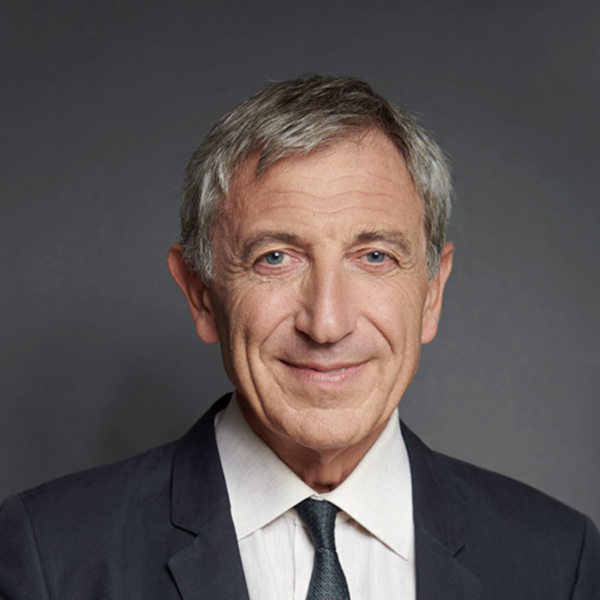As I have just left the presidency of the pan-European professional association of transmission system operators (European Network of Transmission System Operators) after a 4-year mandate preceded by a history of various positions or functions since its creation in 2010, I wish to share the view I have on this institution.
A few words to describe it first:
- Its principle is to bring together in a non-profit association, under Belgian law, the operators of interconnected transmission networks on a pan-European perimeter, this term that I choose to differentiate its perimeter from political definitions.
- It is the legacy of a history of cooperation between electricity system operators: even before the changes towards the current organization, integrated production, transmission, distribution and supply operators detected the interest in sharing resources across borders; This led to the construction of interconnections at the end of the 19th century, and consequently to the creation of a body to choose the common rules necessary for the proper functioning of these interconnections.
- This has led to the creation of several regional associations (Central Europe, Great Britain, Nordic countries, Baltic countries, etc.).
- The perimeters of these associations were first defined by the so-called synchronous or alternating current interconnection: but the multiplication of direct current links between these synchronous regions, which leads to a hybrid AC and DC meshed network on a continental scale, as well as the political will of the European Commission for harmonization at the level of the European Union, led to a merger of these associations to create ENTSO-E.
The result is that today the geographical scope can only be defined by the list of members, and not according to the respect of any other criteria, because:
-
- It is ‘incomplete’ in terms of physical interconnection
- First of all, since the English and Scottish operators left the association at the request of their government after Brexit, even though plans to strengthen Great Britain’s interconnection with the continent are still ongoing
- Dissension in the Balkans results in Kosovo’s absence
- But also in the South without taking into account the Spain-Morocco interconnection, and potentially the ‘Mediterranean loop’; hence a close technical cooperation with MedTSO, the association of operators bordering the Mediterranean
- It is ‘incomplete’ in terms of physical interconnection
-
- On the other hand, it includes countries that are not (yet) interconnected:
- The three Baltic countries, with a project underway to connect that will follow the disconnection of the Russian grid, scheduled for 2025
- The islands: Cyprus and Iceland, for the first time a submarine link project from Greece, in this case Crete, is also underway
- The Northern Irish operator SONI, which, although ‘brexited’, has been authorized to maintain its membership given the very high degree of integration with the Irish operator EirGrid in operation of the island’s grid
- On the other hand, it includes countries that are not (yet) interconnected:
-
- From a political point of view, the European Commission wants pre-eminence or even exclusivity (at least voting rights on decisions) for the EU member countries…. while admitting Norway, with which an agreement has been reached guaranteeing ‘voluntary’ compliance with EU electricity rules. This is because it has entrusted entso-e with ‘legal mandates’ through successive legislative packages, i.e. the responsibility of developing a certain number of products: proposals for rules for the coordinated operation of interconnections (the ‘network codes’ and their evolutions) which are then the subject of consultations and decisions by the European competent bodies, before being declined (‘implemented’).
-
- What if, as the services of DG ENER or ACER suggest, Switzerland and its operator SwissGrid were to be excluded from the association, even though the heart of the interconnected grid (and its origin) is precisely Switzerland? And that there are also essential resources to provide operators with the means to balance the network securely?
-
- A widening gap between the physical reality of interconnection and political affiliation, which would be transposed to the level of membership, runs the risk of much more complicated cooperation to implement (this is already the case today for British operators) with a burdensome combination of the usual committees of the association and potential bilateral agreements with a growing number of colleagues not admitted to the round table.
-
- One can also wonder how the European Commission authorizes (out of necessity no doubt more striking than for electricity) an organisation like EuroControl in the field of international coordination of airspace control, for which a more than enlarged membership (Russia still today for example) does not pose any questions, everyone understanding the security issues linked to a perfect mastery of the coordination of countries.
Thanks to the involvement of its members through their experts, through the own resources entrusted to it (budget approaching €50 million for around 130 people), through the ability to find compromises between different sensitivities, cultures or national contexts, with a driving force that is the awareness by all of the common interest, ENTSO-E has reached a degree of maturity that far exceeds that of its adolescent age. And it is above all an association of operators and not yet another think tank producing “position papers”. Operators who are ‘doers’, who implement transformations: one of the masterful proofs of this ability has been given with the accelerated interconnection of Ukraine and Moldova to the European system, which has allowed synchronization in a record timing, a remarkable feat that is both technical and collective courage to face the political reluctance sometimes semi-expressed by some.
Beyond the vicissitudes of geopolitical news, the association is organized into several committees where all members are represented, under the coordination and guidance of an Executive Board of 12 members:
- An ‘Operation’ committee: where the ongoing monitoring of operations, and of possible incidents, are analysed and lessons learned; it also covers the implementation of common rules and the development of changes to these rules or new ones.
- A ‘development’ committee which has a guiding role, in particular with the publication of ‘flagship’ studies:
- The ‘Winter and Summer Outlooks’: risk assessments of winter or summer passages
- the extension of this type of analysis to the future balance between production and consumption over the next 10 years
- the 10-year network development plan, an instrument for coordinating national plans on the one hand, and an assessment of the costs and benefits of the various infrastructure development projects on the other, which will be the basis, among other things, for access to European funding
- A ‘research, development and innovation’ committee, firstly a place of sharing know-how and innovative actions like the previous ones, a melting pot of alliances for joint projects often eligible for European funding
- a ‘markets’ committee: which for instance has recently drawn up and then advocated the positions of the TSOs on the reform of the markets desired by the EU after the reactions provoked by the level of prices reached over the last two years, and more generally ensures the adequacy between market rules and operational reality for electricity systems
- an Information Technology Committee, which leads the development of data exchange tools and platforms for the benefit of members, and even beyond for the electricity system actors
ENTSO-E also has close cooperation with many European associations:
- DSO, which brings together the operators of the transmission and distribution systems, a body that is becoming more and more critical with the transformations in the operation of distribution networks brought about by the energy transition (massive arrival of production, but also data management and more generally the relationship with the connected players
- ENTSO-G with gas transmission system operators, with the increasing intertwining of interactions between energies
- RGI Renewables Grid Initiative is an association that brings together TSOs and NGOs and is a platform for discussions and sharing of best practices, or even positions on the “acceptability” of networks, particularly new infrastructures required by the energy transition, and which should make it possible to better share often incompatible issues and move towards solutions.
France, via RTE, is a very active contributor both by contributing and sharing expertise, but also for the functioning of the association: this is how the new governance mandate will see Damian Cortinas take the leadership of the Board, and Olivier Arrivé that of the Operation Committee.
My dearest wish is to keep on this trajectory of success, marked by the fact that the circle of accessions is widening (with Turkey and Ukraine as observer members) and that there are new potential candidates (Moldova of course, but also Georgia, and even Israel in anticipation of the Greece-Cyprus-Israel interconnection projects).
One condition seems necessary to me: it is that the DNA of this association, i.e. interconnection, in a word the network in the most emphatic sense of what this concept entails/brings (solidarity, sharing, resilience, etc.), is respected and that it can welcome all the members who make sense, in particular to guarantee safe operation, and secondly, the availability of this platform for international exchanges and the collection of immense collective benefits, all in transparency vis-à-vis public authorities and stakeholders in the energy sector.
This transparency and quite simply respect for the law can – and this is already the case – lead to certain decisions of a regulatory or legislative nature being taken only by the countries concerned by the said legislation, which in no way prevents their elaboration from being carried out with a enlarged share of all since most often the physical effects will ‘go beyond’ the legal perimeter, and that finally, the wider sharing of good practices and innovations can only benefit the quality of the association’s productions (which is itself inspired by sources such as international scientific societies, and finally by the feedback from public consultations which are completely open).
The stakes are such that it is to be hoped that pragmatism will prevail over dogmatic considerations that hinder progress.

